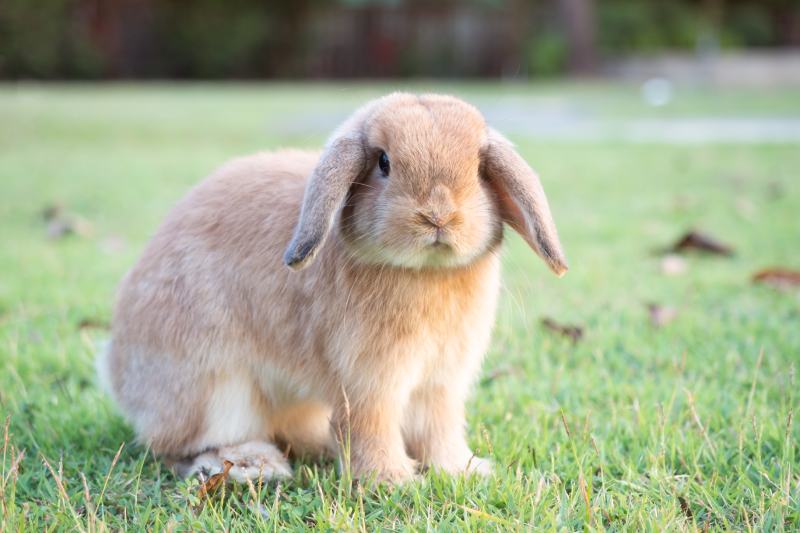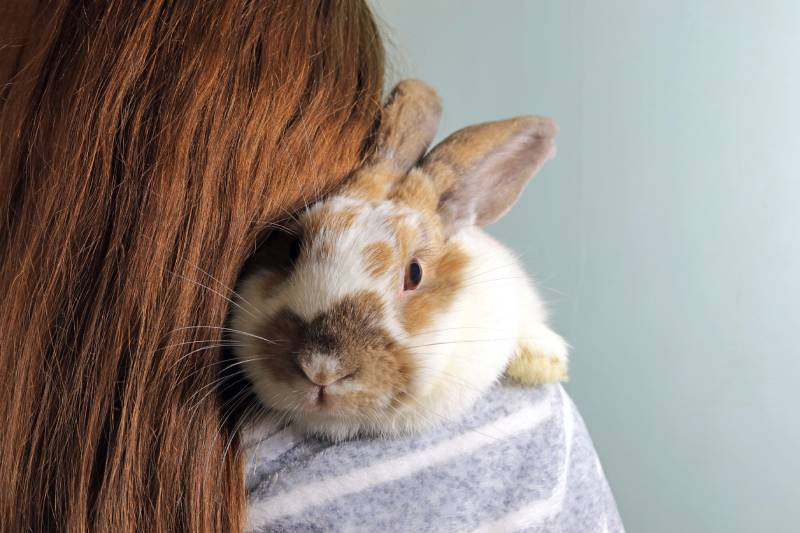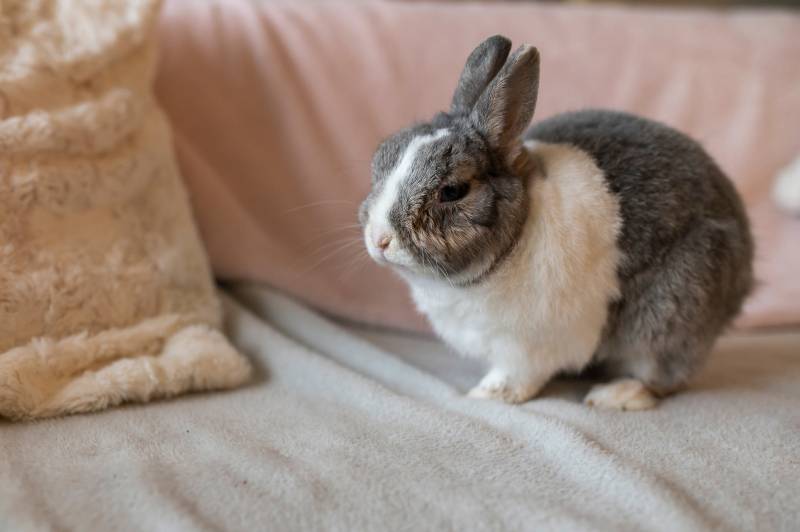Can Rabbits Eat Hamster Food? Vet-Verified Nutrition Guide
Updated on

Click to Skip Ahead
If you are the proud pet parent of two bundles of fluff—a cute bunny and a sweet hamster—you may think that buying the same food for both of them would be a good idea.
However, rabbits should not eat hamster food. For one thing, hamsters are omnivores and rabbits are herbivores and therefore, have different nutritional needs. Also, since rabbits’ digestive systems are complex, delicate, and primarily adapted to high-fiber foods like hay, hamster pellets are far too low in fiber and high in carbs to make up the bulk of a bunny’s diet.
That said, a few mouthfuls of hamster pellets, as a one off, won’t likely harm your rabbit. Still, it is important to realize that most pet foods are not interchangeable, mainly because they are designed to meet the specific nutritional needs of each species.
Read on as we explore in more detail the reason that rabbits shouldn’t eat hamster food, provide vet-approved info on rabbit nutrition, and offer a few tips for maintaining a healthy diet for your little bunny!
What Should Rabbits Eat?
Since rabbits are herbivores, their diet consists of plant matter. In the wild, they graze on a variety of grasses, leaves, roots, and other vegetation. This natural diet is high in fiber and low in fat, which is the best food for their complex digestive systems and can prevent the onset of gastrointestinal diseases.
A proper rabbit’s diet should consist of the following components:
- Grass-based hays, such as Timothy, brome, or orchard are the mainstay of a rabbit diet. Legume hays such as alfalfa are not recommended.
- Leafy greens, such as romaine, red leaf lettuces, broccoli leaves, cilantro, bok choy, watercress, and beet greens. Feed about one packed cup of fresh greens per two pounds of body weight per day. When selecting greens, be conscious of the total calcium intake as excessive calcium can lead to calcium-based bladder stones.
- Pellets should usually comprise 10-20% of the total diet. They can be a complementary part of a bunny’s diet, but they should not be the main focus. Look for extruded pellets specially formulated for rabbits, as these are designed to provide essential nutrients without excess fat or protein.
- Fruits like apples and pears as occasional treats.
- Foods high in carbohydrates should be given sparingly as they can disrupt the delicate balance of rabbits’ gut flora. Avoid grains, cereals, corn and seeds.
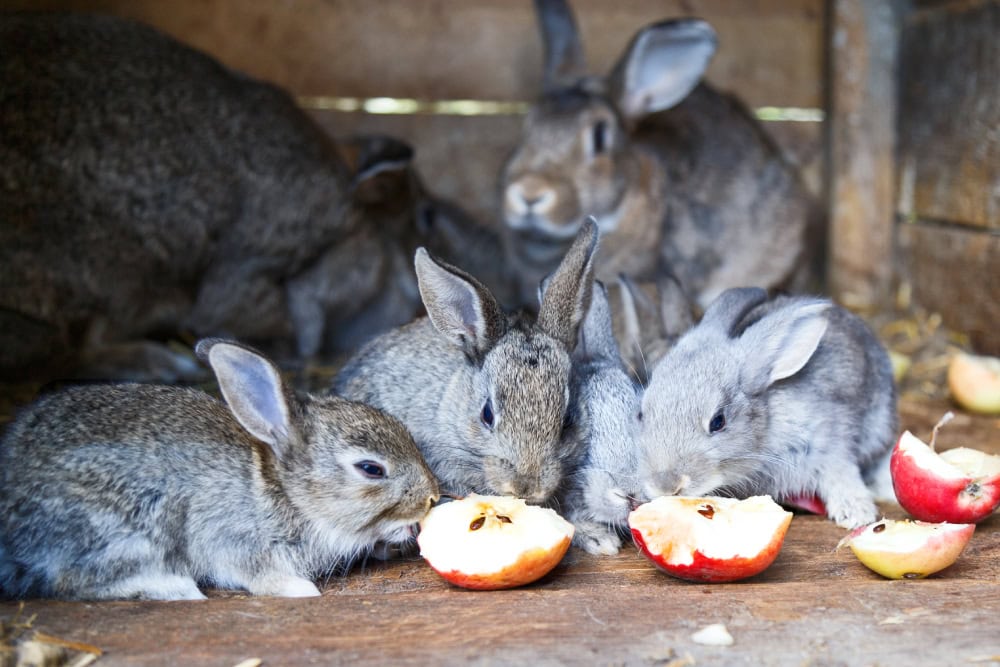
What Happens If Rabbits Eat Too Many Hamster Pellets?
Hamster pellets typically contain higher levels of carbohydrates, protein, and fat than fiber. However, rabbits require a diet rich in fiber to maintain proper digestion, while their carbs and protein needs differ significantly from those of hamsters. Too many hamster pellets may lead to gastrointestinal upset as well as nutritional deficiencies.
While bunnies can safely eat rabbit pellets, overfeeding pellets to adult rabbits is a common cause of obesity. If the pellet does not have enough fiber or too much carbohydrate, diarrhea, gas, and soft stool arise due to an overgrowth of abnormal bacteria in the gastrointestinal tract.
Tips for a Healthy Rabbit Diet
To ensure that your rabbit receives a balanced and nutritious diet, here are essential tips:
- Focus on providing your rabbit with unlimited access to high-quality hay. Also, make sure the package isn’t moldy or stinky.
- For rabbit pellets, look for brands that contain at least 18% fiber and 1% or less in calcium. However, these can also easily spoil, so make sure they are stored correctly and in date.
- Add variety to your rabbit’s meals but do so gradually. This is essential for avoiding disturbances in your rabbit’s gut flora. While you should provide your rabbit with a variety of fresh veggies, introduce them slowly and in small quantities. After each introduction of new food, monitor your rabbit for signs of soft feces, diarrhea, gas, or any indications of gastrointestinal pain.
- Avoid sugary treats at all costs. The worst foods for rabbits are those filled with sugar, such as sweets, white bread, crackers, and cereals. Go easy with fruits too, as they often contain more sugar than vegetables do.
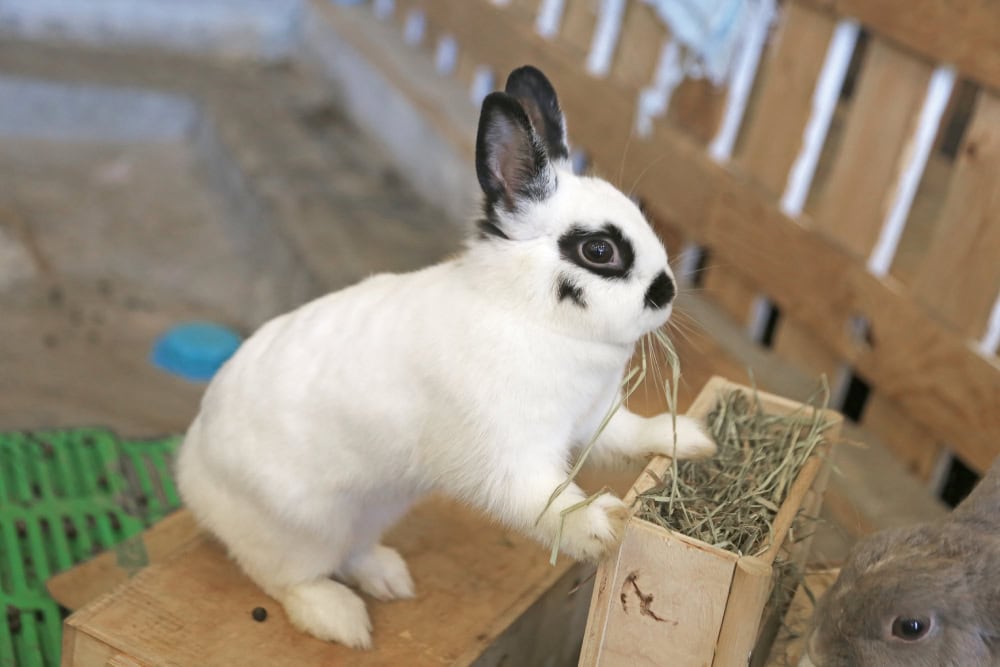
Final Thoughts
Rabbits have complex digestive systems and specific dietary needs, which are quite different from those of hamsters. Giving hamster pellets to your rabbit can lead to gastrointestinal problems and nutritional deficiencies. Therefore, to avoid disturbing the delicate balance of your rabbit’s intestinal flora, it’s best to provide them with a diet composed of high-quality hay, fresh veggies, and rabbit pellets in limited quantities. This way, you will ensure that your little bunny will be able to hop around happy and healthy!
Featured Image Credit: Alemaz, Shutterstock



